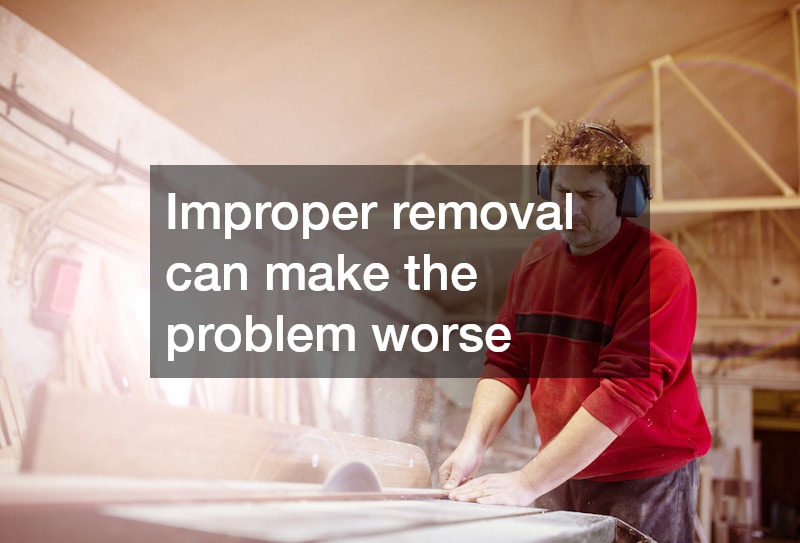Renovating a home can be an exciting project, whether you’re updating your kitchen, finishing a basement, or remodeling an older bathroom. However, one critical safety concern that many homeowners overlook is the potential presence of asbestos. Commonly used in construction materials before the 1980s, this material can pose serious health risks if disturbed.
Identifying it before starting renovations is essential for protecting yourself, your family, and your property.
Understanding the basics of asbestos and knowing where it may be hidden in your home is the first step. While it can be tempting to ignore it or assume your home is free of this hazardous material, even small amounts can become airborne when disturbed. Once inhaled, asbestos fibers can cause long-term respiratory issues, including lung disease and cancer. Homeowners must approach renovations with caution and proper knowledge.
Common Places to Find Asbestos in Older Homes
Homes built before the 1980s often contain asbestos in a variety of building materials. One of the most common places to find it is in insulation. Pipe insulation, boiler insulation, and attic insulation may contain fibers that are dangerous if they become airborne. Similarly, older flooring materials, such as vinyl tiles and linoleum, sometimes include this material in the backing or adhesive. Removing these materials without proper precautions can release fibers into the air.
Another area where asbestos may be present is in roofing and siding materials. Shingles, roof felt, and exterior siding installed decades ago often contain it. Even textured paints and popcorn ceilings are potential sources. In these cases, disturbing the material during renovations can lead to significant exposure. Being aware of these high-risk areas is crucial for any homeowner planning to update their property.
Signs That Asbestos May Be Present
While only a professional test can confirm the presence of asbestos, certain clues can indicate that it might be in your home. First, consider the age of your property. Homes built before 1980 are more likely to contain asbestos in insulation, flooring, and roofing. Secondly, the type of materials can be a hint. Crumbling or damaged insulation, brittle flooring tiles, or textured ceiling coatings are more likely to contain these fibers.
It’s also important to look for renovations or repairs that may have disturbed older materials. If previous homeowners attempted DIY repairs using old materials, asbestos could have been exposed. These warning signs should prompt a careful assessment and, ideally, professional testing before beginning any renovation projects.
How to Safely Identify Asbestos
Identifying asbestos requires caution. The safest approach is to hire a certified professional who can take samples and analyze them in a laboratory. Attempting to collect samples yourself without proper equipment increases the risk of releasing fibers into the air. Professionals use specialized tools, protective clothing, and containment methods to minimize exposure.
For homeowners who want a preliminary check before calling in professionals, visual inspection can help identify materials that may require testing. Look for insulation around pipes, vinyl tiles, or popcorn ceilings that appear aged or damaged. While you cannot confirm its presence visually, spotting these materials can guide where testing is needed.
Steps to Take if Asbestos Is Found
If testing confirms the presence of asbestos, do not attempt to remove it on your own unless you are trained and properly equipped. Improper removal can make the problem worse by spreading fibers throughout your home. Licensed abatement professionals follow strict safety protocols to remove or encapsulate it safely.
In some cases, removal is not necessary. Encapsulation, which involves sealing the asbestos in place with a protective coating, can prevent fibers from becoming airborne. This option is often suitable for materials that are in good condition and not in areas subject to frequent disturbance. A professional assessment will help determine the safest and most cost-effective solution for your home.
Why Early Identification Matters
Identifying asbestos before renovations is critical for several reasons. First, it protects the health of everyone in the home by preventing exposure to harmful fibers. Second, it ensures that renovation projects proceed safely without delays caused by accidental discoveries of hazardous materials. Finally, it preserves the value of your home. Unchecked issues can complicate future sales or even result in legal liabilities if someone is harmed.
Homeowners who take the time to identify it early are better prepared to make informed decisions about removal, repair, or encapsulation. This proactive approach reduces stress and provides peace of mind during renovation projects.
Renovating an older home can be rewarding, but it comes with responsibilities, including the safe handling of potential hazards. By understanding common sources, recognizing warning signs, and enlisting professional help for identification and removal, homeowners can protect their health and investment. Taking these steps ensures that your renovation projects are not only successful but also safe for your family.
Remember, the key to safe renovations is preparation. Before lifting a single floor tile or scraping a ceiling, consider whether asbestos may be present and take the necessary precautions. Proper identification and professional handling of this material are essential steps for maintaining a safe and healthy home environment.





